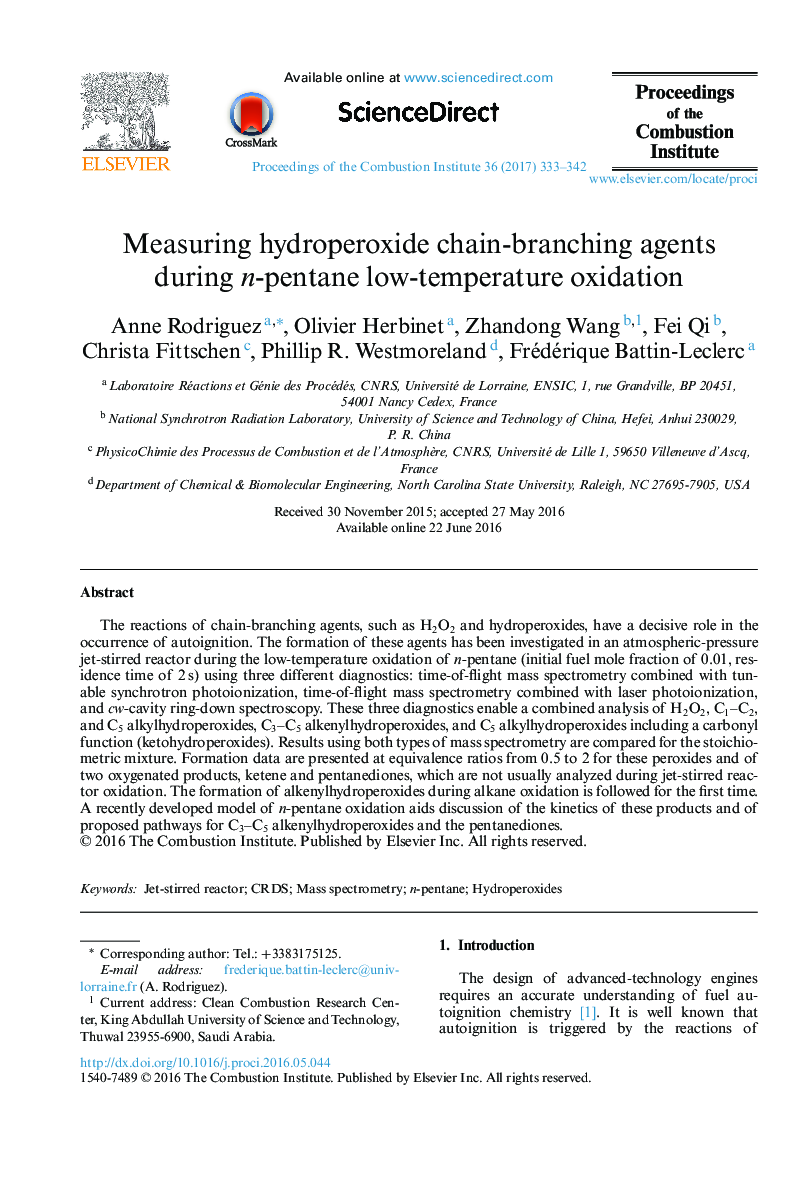| Article ID | Journal | Published Year | Pages | File Type |
|---|---|---|---|---|
| 6477895 | Proceedings of the Combustion Institute | 2017 | 10 Pages |
The reactions of chain-branching agents, such as H2O2 and hydroperoxides, have a decisive role in the occurrence of autoignition. The formation of these agents has been investigated in an atmospheric-pressure jet-stirred reactor during the low-temperature oxidation of n-pentane (initial fuel mole fraction of 0.01, residence time of 2Â s) using three different diagnostics: time-of-flight mass spectrometry combined with tunable synchrotron photoionization, time-of-flight mass spectrometry combined with laser photoionization, and cw-cavity ring-down spectroscopy. These three diagnostics enable a combined analysis of H2O2, C1-C2, and C5 alkylhydroperoxides, C3-C5 alkenylhydroperoxides, and C5 alkylhydroperoxides including a carbonyl function (ketohydroperoxides). Results using both types of mass spectrometry are compared for the stoichiometric mixture. Formation data are presented at equivalence ratios from 0.5 to 2 for these peroxides and of two oxygenated products, ketene and pentanediones, which are not usually analyzed during jet-stirred reactor oxidation. The formation of alkenylhydroperoxides during alkane oxidation is followed for the first time. A recently developed model of n-pentane oxidation aids discussion of the kinetics of these products and of proposed pathways for C3-C5 alkenylhydroperoxides and the pentanediones.
